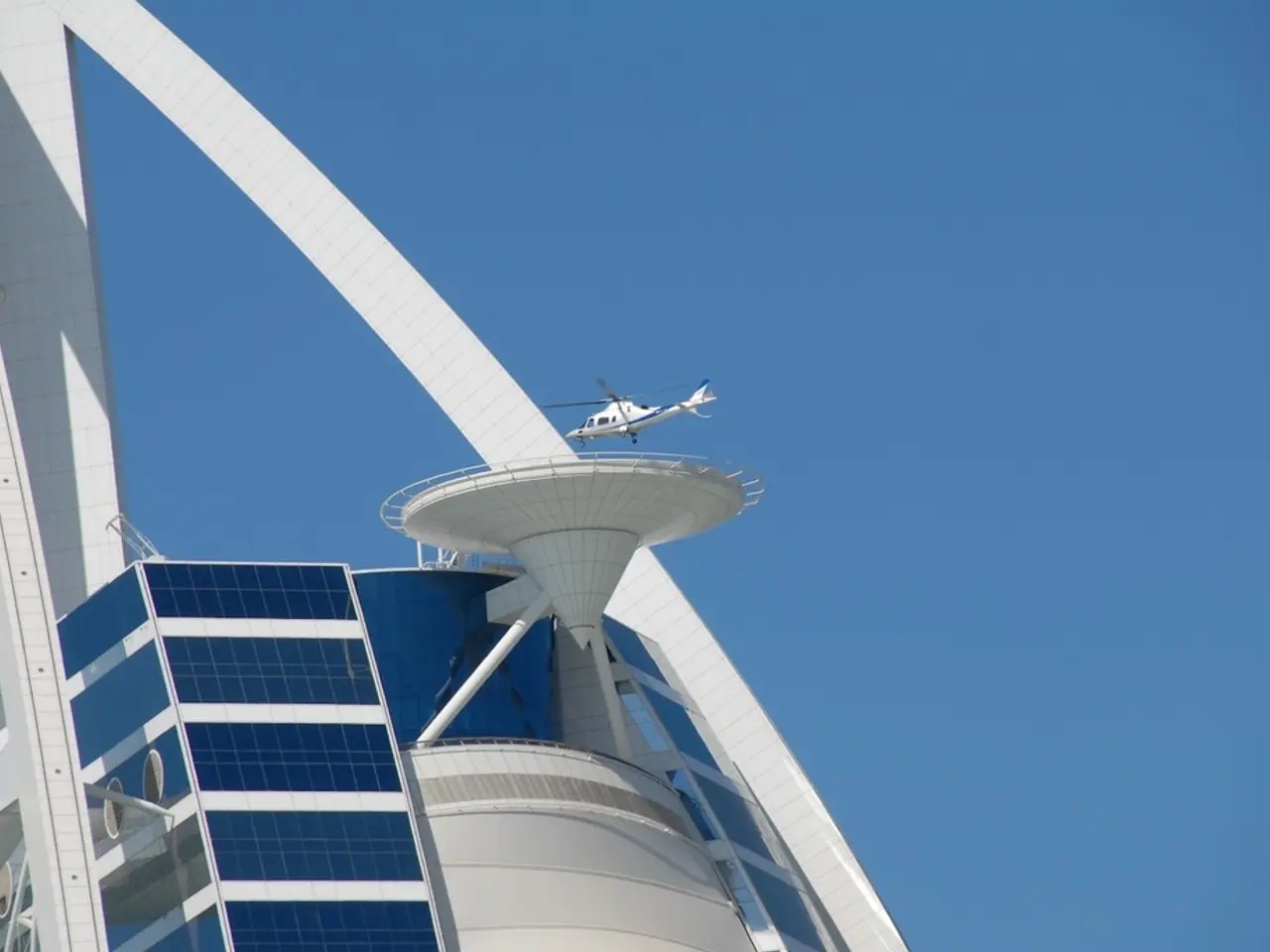China's inaugural helicopter journey powered by environmentally-friendly aircraft fuel
First Sustainable Aviation Fuel (SAF) Flight in China Marks a Significant Milestone
The skies over Hefei Shiwan Airport in China recently witnessed a landmark event as an Airbus H125 helicopter took to the skies, powered by sustainable aviation fuel (SAF). This was the first helicopter flight using SAF in China, a significant step towards greener aviation technologies in the country.
The flight was made possible through a cooperation agreement between Airbus and China National Aviation Fuel (CNAF), aiming to optimize the SAF supply chain by diversifying sources and enhancing production. The goal is to reach the ambition of using 10 percent SAF by 2030.
SAF, an alternative aviation fuel made from various feedstocks such as used fat, oil, grease, municipal, and forestry waste, has been shown to result in up to 80 percent reduction in CO2 across its entire lifecycle, compared to fossil jet fuel.
Safran Helicopter Engines, the manufacturer of the H125's engine, has a full engine portfolio certified to operate on up to 50% SAF. Marc Delort, General Manager of Safran Helicopter Engines China, expressed willingness to play an active role in China by providing propulsion solutions for SAF.
Du Guihe, Board Chairman of SGST, stated that the success of this flight is significant for SAF promotion and application. Colin James, Managing Director of Airbus Helicopters in China, expressed pride in SGST launching the noteworthy SAF flight with the H125.
The use of SAF is one of Airbus Helicopters' strategies to contribute to ATAG's NetZero outlook by 2050. Airbus and CNAF have signed a Memorandum of Understanding (MoU) to cooperate on SAF production, application, and standard formulation.
This development marks a significant sustainability milestone in Chinese aeronautics by reducing lifecycle emissions, complementing advancements in electric aviation, and enabling China’s compliance with international environmental aviation frameworks.
As the world moves towards greener aviation solutions, China is making strides in adopting SAF in its helicopter operations. This not only supports the country's overarching goals for greener, more sustainable aviation but also sets a standard within the industry for reducing carbon emissions.
The collaboration between Airbus and China National Aviation Fuel (CNAF) in optimizing SAF supply chain has potential implications for the environmental-science sector, as it aims to diversify sources and enhance production of SAF. This shift towards SAF could also have significant impacts on finance, as investments in cleaner technologies like SAF may increase due to its potential to reduce emissions by up to 80% across its lifecycle. Furthermore, the advancement in SAF technology, coupled with electric aviation, showcases China's commitment to aligning its aeronautics industry with global financial and environmental responsibilities, thereby positioning the country as a leader in sustainable and technologically innovative solutions.




